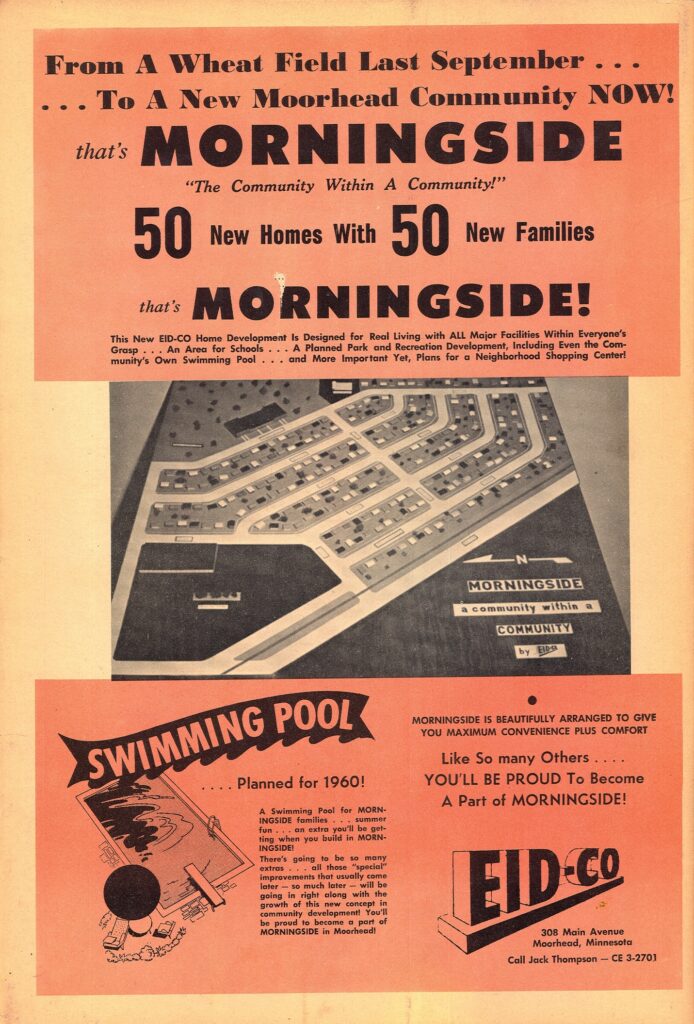
(RIGHT) Morningside, east of Main and north of 12th Ave S, was one of many new neighborhoods added to Moorhead in the 1950s.
clay county histories
Markus Krueger | Program Director HCSCC
I had some friends trying to buy homes in Moorhead recently, and boy did they have a hard time of it. The housing market was crazy! Too many buyers were competing for too few homes. You had to act fast and prepare to pay more than asking price. As bad as it was, though, it was nothing compared to the years after World War II, when a few factors came together to create a massive housing shortage that led to the biggest building boom in Moorhead history.
The first reason for the housing shortage was that very few houses were built between 1929 and the late 1940s. Few people could afford to build a house during the Great Depression. When World War II started, we went right from Depression to massive worker shortage as millions of young men went into the service. People were able to negotiate good wages for the first time in a decade, but even fewer homes were built from 1941-45 because all the building materials were strictly rationed for use in the war effort. City records list only three homes in Moorhead built in 1943. Take a walk through an older residential neighborhood and it’s common to see a 1920s bungalow next door to a 1950s ranch house – that 1920s bungalow was the edge of town for 20 years.
To thank our soldiers, sailors, airmen and Marines for saving the world, our government passed the GI Bill, which gave our veterans a number of benefits. Almost half of America’s 16 million WWII veterans used the bill to go to college. A few hundred of those millions moved to the college town of Moorhead. Concordia’s student population almost doubled from 1945 to 1946 and Moorhead State almost quadrupled between 1943 and 1950. Those new students were crammed into bunks in gymnasiums and classrooms because Moorhead didn’t have enough houses for them to live in.
And it wasn’t just students coming. Farm laborers, replaced by machinery, got better paying jobs in town. A lot of those GI students stayed in town for local jobs and local girls, and these young couples started having babies at a rate so extraordinary that we still call their retired children “Baby Boomers.” These young families were ready to use another benefit of the GI Bill: historically low interest rates on home loans.
When building supplies became available again in the late 1940s, people cashed in their savings and built new houses. Moorhead became the largest and fastest growing city in western Minnesota. In 1940 the town of 9,491 was smaller than Fergus Falls, but it more than doubled to 22,934 by 1960.
Here’s the formula: Pent-up housing demand since 1929 + great wages with nothing to spend it on since 1941 + population explosion = LOTS of new houses in the 1950s. When I crunched the data ten years ago, the most common date of construction for an existing house in Moorhead was still 1955. This September will be the 150th anniversary of the founding of Moorhead, but it is also, in many ways, a post-war boomtown.

